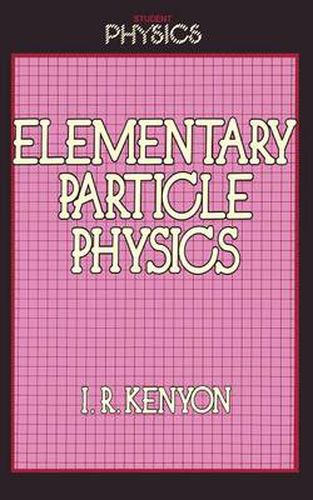Readings Newsletter
Become a Readings Member to make your shopping experience even easier.
Sign in or sign up for free!
You’re not far away from qualifying for FREE standard shipping within Australia
You’ve qualified for FREE standard shipping within Australia
The cart is loading…






This title is printed to order. This book may have been self-published. If so, we cannot guarantee the quality of the content. In the main most books will have gone through the editing process however some may not. We therefore suggest that you be aware of this before ordering this book. If in doubt check either the author or publisher’s details as we are unable to accept any returns unless they are faulty. Please contact us if you have any questions.
This book is intended for the use of final-year undergraduates and first-year postgraduates. The aim has been to concentrate on the ‘Standard Model’ and the gauge symmetries because these form the core of the subject. Leptons, quarks and forces are introduced at the beginning of the book, with a minimum of detail; then follow the experimental techniques. After this introduction the gauge theories are dealt with in order of increasing complexity. Attention is then focused on the hadrons. Deep inelastic scattering ofhadrons is dealt with first, then hadron spectroscopy and finally hadron interactions. Current developments beyond the standard model appear in a last chapter. The appendices contain mathematical detail and other material not included in the main text. These appendices cover kinematic, cross-section and decay-rate formulae; Breit-Wigner resonances; some Clebsch-Gordan coefficient tables; a table of particle properties; a set of exercises and detailed answers; and the Dirac equation. One appendix is devoted to calculating the scattering amplitudes for fermion + fermion going to fermion + fermion, which is, if anything, the ‘basic’ process. The appendices, apart from tabulations, are mainly intended for the postgraduate, though the interested undergraduate may also find them valuable. Up-to-date references are given at the end of the book.
$9.00 standard shipping within Australia
FREE standard shipping within Australia for orders over $100.00
Express & International shipping calculated at checkout
This title is printed to order. This book may have been self-published. If so, we cannot guarantee the quality of the content. In the main most books will have gone through the editing process however some may not. We therefore suggest that you be aware of this before ordering this book. If in doubt check either the author or publisher’s details as we are unable to accept any returns unless they are faulty. Please contact us if you have any questions.
This book is intended for the use of final-year undergraduates and first-year postgraduates. The aim has been to concentrate on the ‘Standard Model’ and the gauge symmetries because these form the core of the subject. Leptons, quarks and forces are introduced at the beginning of the book, with a minimum of detail; then follow the experimental techniques. After this introduction the gauge theories are dealt with in order of increasing complexity. Attention is then focused on the hadrons. Deep inelastic scattering ofhadrons is dealt with first, then hadron spectroscopy and finally hadron interactions. Current developments beyond the standard model appear in a last chapter. The appendices contain mathematical detail and other material not included in the main text. These appendices cover kinematic, cross-section and decay-rate formulae; Breit-Wigner resonances; some Clebsch-Gordan coefficient tables; a table of particle properties; a set of exercises and detailed answers; and the Dirac equation. One appendix is devoted to calculating the scattering amplitudes for fermion + fermion going to fermion + fermion, which is, if anything, the ‘basic’ process. The appendices, apart from tabulations, are mainly intended for the postgraduate, though the interested undergraduate may also find them valuable. Up-to-date references are given at the end of the book.